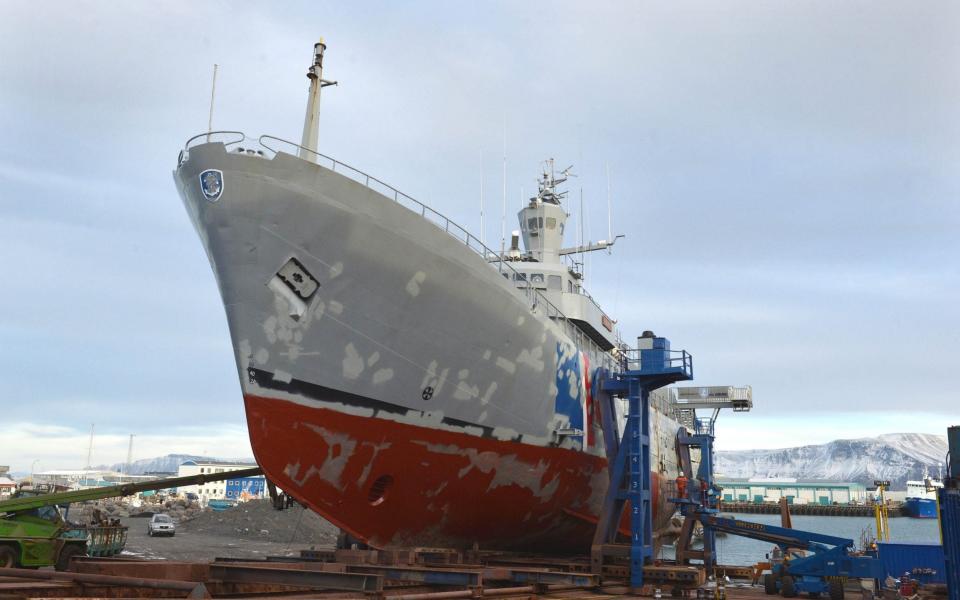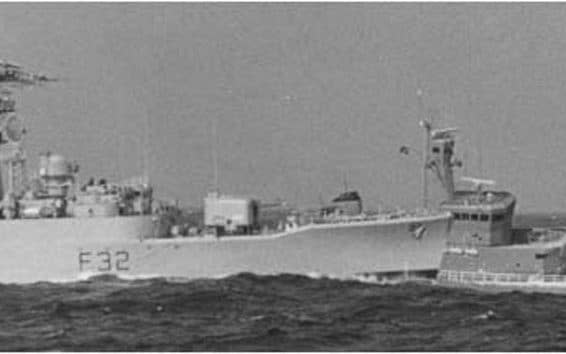What the last 'Cod War' was like, by a veteran reporter

Does Britain’s threat of ‘gunboat diplomacy’ stand a better chance of success in saving our fish and protecting our fishermen from France and the EU than we had against Iceland in the ‘Cod Wars’ 45 years ago?
There certainly seems to be more determination on the part of ministers - at least so far - than there was all those years ago when as a rueful Roy Hattersely, then the Labour minister in charge, now recalls: "We are always a bit embarrassed about sending warships against our friends and allies, the Icelanders."
Another vital difference is that we at least appear to have the vessels more suited to protecting our fishing grounds from foreign depredations than we had in 1975, when we were the nation seeking to maintain our right to fish in other people’s waters.
As a young reporter, I was a ‘Cod War Correspondent’ on HMS Leander for three weeks in December 1975. She was, to my mind, a beautiful 3,000 ton ship capable of 28 knots, but her sleek lines masked the fact that she was completely unsuitable for the task allotted to her.
This frigate’s main armament was the Ikara anti-submarine missile, but more significantly as a vessel built for speed, she had a wafer-thin hull, and yet facing her in Arctic waters off Iceland were that island nation’s formidable gunboats.

Much smaller than the RN frigates and all named after Norse gods, the Thor and Odinn had thick ice-breaking hulls and what, to my untutored eye, looked like a giant cannon on her foredeck.
This time, it appears that Prime Minister Boris Johnson is hoping that the Royal Navy is to use its more appropriate River Class patrol vessels, like HMS Tamar, to repel French and other EU invaders of our territorial waters.
‘Our’ job back in 1975 was to put Leander and its 250-strong crew between the Thor and the British trawlers, from the likes of Hull, Grimsby, Fleetwood and Aberdeen, which the Icelanders claimed were fishing illegally in their territorial waters.

What Thor and her friends sought to do was cut the nets off the British boats - at immense cost, and persuade our trawlermen that fishing in Icelandic waters was too expensive.
The upshot was several hair-raising close shaves - in the near darkness of the Arctic winter - where Leander and Thor appeared only inches apart, so close that I could wave and exchange greetings with the BBC film crew, who were with ‘the enemy’ on board the gunboat. (More loyally, you may think, the ITN crew were with me in Leander).
There were frequent rammings and collisions between British and Icelandic vessels during that 1975/76 Cod War - the third in a series of disputes about fishing rights over several decades - and Leander and Thor had both to ‘retire hurt’ for repairs after I’d left the ship.
However, just as now, there were bigger issues at stake 45 years ago. Now the UK and EU are seeking an agreement on Brexit. Then there were fears, from the USA and others, that Iceland might leave Nato if it didn’t get its way. In the end that threat won the day. Those British trawlers lost their traditional fishing grounds and their home ports lost their livelihoods... for ever.
Yet again, our warships may be asked to confront a Nato ally, with a massive diplomatic wrangle playing out as a backdrop.
The question now is will Boris Johnson’s threat of a ‘Poisson War’ against French and other European fishing boats solve or inflame the current stand-off over Brexit?

